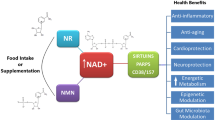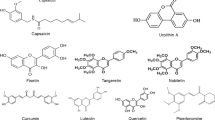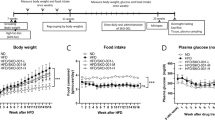Abstract
Oxidized low-density lipoprotein (ox-LDL) is an inducer of inflammation. To elucidate the link of depression of ox-LDL accumulation and anti-inflammatory function of rice protein (RP) whether dependent on methionine availability, growing and adult rats were fed RP and methionine-supplemented RP (RM) under cholesterol-enriched dietary condition. After two weeks feeding, RP and RMs exerted the anti-inflammatory effects through up-regulating IL-10, while RP and RMs significantly reduced ox-LDL levels and effectively suppressed the expressions of inflammatory mediators (COX-2, IL-1β, IL-6, TNF-α, iNOS). The anti-inflammatory molecular mechanism was to inhibit NF-κB activation and to simulate methionine sulfoxide reductase expression. Results showed, under cholesterol-enriched dietary condition, the anti-inflammatory action can be induced by RP and enhanced by methionine in growing and adult rats. The present study reveals a link of the decreased ox-LDL accumulation with the anti-inflammatory function of RP, which is dependent on methionine availability and independent of dietary cholesterol.






Similar content being viewed by others
References
Agarwal N, Golwala H. Lowering inflammation through lipid-lowering therapy: are we there yet? European Heart Journal - Quality of Care and Clinical Outcomes. 6: 93-94 (2020)
Ali I, Manzoor Z, Koo J-E, Moon S-R, Byeon S-H, Yoo E-S, Kang H-K, Hyun J-W, Lee N-H, Koh Y-S. Monoolein, isolated from Ishige sinicola, inhibits lipopolysaccharide-induced inflammatory response by attenuating mitogen-activated protein kinase and NF-κB pathways. Food Science and Biotechnology. 26: 507-511 (2017)
Cai J, Yang L, He HJ, Xu T, Liu HB, Wu Q, Ma Y, Liu QH, Nie MH. Antioxidant capacity responsible for a hypocholesterolemia is independent of dietary cholesterol in adult rats fed rice protein. Gene. 533: 57-66 (2014)
Cardoso D, Perucha E. Cholesterol metabolism: a new molecular switch to control inflammation. Clinical Science. 135: 1389-1408 (2021)
Chen J, Bao C, Cho SH, Lee HJ. Green lipped mussel oil complex suppresses lipopolysaccharide stimulated inflammation via regulating nuclear factor-κB and mitogen activated protein kinases signaling in RAW264.7 murine macrophages. Food Science and Biotechnology. 26: 815-822 (2017)
Chung S, Parks JS. Dietary cholesterol effects on adipose tissue inflammation. Current Opinion in Lipidology. 27: 19-25 (2016)
Guo H, Sun J, Li D, Hu Y, Yu X, Hua H, Jing X, Chen F, Jia Z, Xu J. Shikonin attenuates acetaminophen-induced acute liver injury via inhibition of oxidative stress and inflammation. Biomedicine & Pharmacotherapy. 112: 108704 (2019)
Kattoor AJ, Pothineni NVK, Palagiri D, Mehta JL. Oxidative stress in atherosclerosis. Current Atherosclerosis Reports. 19: 42 (2017)
Kriete A, Mayo KL. Atypical pathways of NF-κB activation and aging. Experimental Gerontology. 44: 250-255 (2009)
Lee J, Song YO. Perilla oil rich in α-linolenic acid suppresses hepatic SREBPs and NF-κB expression in hypercholesterolemia-induced apolipoprotein E knockout mice. Food Science and Biotechnology. 21: 807-813 (2012)
Li H, Yang L, Yang H-K, Sun S-H, Liu H-B, Wu Q, Chen J-H, Zhuang T-C. Rice protein regulates HDL metabolism-related gene expression and enzyme activity in adult rats. Food Bioscience. 8: 1-7 (2014)
Li H, He H, Wang Z, Cai J, Sun B, Wu Q, Zhang Y, Zhou G, Yang L. Rice protein suppresses ROS generation and stimulates antioxidant gene expression via Nrf2 activation in adult rats. Gene. 585: 256-264 (2016)
Li H, Liang M, Wang Z, Zhang Y, Wu Q, Yang L. Rice protein exerts endogenous antioxidant capacity via methionine sulfoxide reductase and the Nrf2 antioxidant system independent of age. Journal of Medicinal Food. 23: 565-574 (2020a)
Li H, Cai L, Liang M, Wang Z, Zhang Y, Wu Q, Yang L. Methionine augments endogenous antioxidant capacity of rice protein through stimulating MSR antioxidant system and activating Nrf2-ARE pathway in growing and adult rats. European Food Research and Technology. 246: 1051-1063 (2020b)
Liang M, Wang Z, Li H, Cai L, Pan J, He H, Wu Q, Tang Y, Ma J, Yang L. l-Arginine induces antioxidant response to prevent oxidative stress via stimulation of glutathione synthesis and activation of Nrf2 pathway. Food and Chemical Toxicology. 115: 315-328 (2018)
Manzoor Z, Mathema VB, Chae D, Yoo E-S, Kang H-K, Hyun J-W, Lee NH, Ko M-H, Koh Y-S. Extracts of the seaweed Sargassum macrocarpum inhibit the CpG-induced inflammatory response by attenuating the NF-κB pathway. Food Science and Biotechnology. 23: 293-297 (2014)
Métayer S, Seiliez I, Collin A, Duchêne S, Mercier Y, Geraert PA, Tessraud S. Mechanisms through which sulfur amino acids control protein metabolism and oxidative status. Journal of Nutritional Biochemistry. 19: 207-215 (2008)
Monmai C, Nam JH, Lim JH, Rod-in W, Lee TH, Park WJ. Anti-inflammatory activities of the mixture of strawberry and rice powder as materials of fermented rice cake on RAW264.7 macrophage cells and mouse models. Food Science and Biotechnology. 30: 1409-1416 (2021)
Negre-Salvayre A, Dousset N, Ferretti G, Bacchetti T, Curatola G, Salvayre R. Antioxidant and cytoprotective properties of high-density lipoproteins in vascular cells. Free Radical Biology and Medicine. 41: 1031-1040 (2006)
Oh I, Baek EJ, Lee D-H, Choi YH, Bae IY. Anti-obesity and anti-inflammatory effects of ginseng vinegar in high-fat diet fed mice. Food Science and Biotechnology. 28: 1829-1836 (2019)
Panchal SK, Brown L. Cholesterol versus inflammation as cause of chronic disease. Nutrients. 11: 2332 (2019)
Reeves PG, Nielsen FH, Fahey GC. AIN-93 purified diets for laboratory rodents: final report of the American Institute of Nutrition Ad Hoc Writing Committee on the reformulation of the AIN-76A rodent diet. Journal of Nutrition. 123: 1939-1951 (1993)
Rhoads JP, Major AS. How oxidized low-density lipoprotein activates inflammatory responses. Critical Reviews in Immunology. 38: 333-342 (2018)
Rossin D, Calfapietra S, Sottero B, Poli G, Biasi F. HNE and cholesterol oxidation products in colorectal inflammation and carcinogenesis. Free Radical Biology and Medicine. 111: 186-195 (2017)
Tall AR, Yvan-Charvet L. Cholesterol, inflammation and innate immunity. Nature Reviews Immunology. 15: 104-116 (2015)
Wang Z, Liang M, Li H, Cai L, Yang L. Rice protein exerts anti-inflammatory effect in growing and adult rats via suppressing NF-κB pathway. International Journal of Molecular Sciences. 20: 6164 (2019a)
Wang Z, Liang M, Li H, Cai L, He H, Wu Q, Yang L. l-Methionine activates Nrf2-ARE pathway to induce endogenous antioxidant activity for depressing ROS-derived oxidative stress in growing rats. Journal of the Science of Food and Agriculture. 99: 4849-4862 (2019b)
Wang Z, Cai L, Li H, Liang M, Zhang Y, Wu Q, Yang L. Rice protein stimulates endogenous antioxidant response attributed to methionine availability in growing rats. Journal of Food Biochemistry. 44: e13180 (2020)
Yadav UCS, Ramana KV. Regulation of NF-κB-induced inflammatory signaling by lipid peroxidation-derived aldehydes. Oxidative Medicine and Cell Longevity. 2013: 690545 (2013)
Yang L, Kadowaki M. Effects of rice proteins from two cultivars, Koshihikari and Shunyo, on hepatic cholesterol secretion by isolated perfused livers of rats fed cholesterol-enriched diets. Annals of Nutrition and Metabolism. 54: 283-290 (2009)
Yang L; Kadowaki M. Addition of methionine to rice protein affects hepatic cholesterol output inducing hypocholesterolemia in rats fed cholesterol-free diets. Journal of Medicinal Food. 14: 445-453 (2011)
Yang L, Chen J-H, Xu T, Nie M-H, Yang H-K. Hypocholesterolemic effect of rice protein is due to regulating hepatic cholesterol metabolism in adult rats. Gene. 512: 470-476 (2013a)
Yang L, Han G, Liu Q-H, Wu Q, He H-J, Cheng C-Z, Duan Y-J. Rice protein exerts a hypocholesterolemic effect through regulating cholesterol metabolism-related gene expression and enzyme activity in adult rats fed a cholesterol-enriched diets. International Journal of Food Sciences and Nutrition. 64: 836-842 (2013b)
You M-K, Rhuy J, Kim H-A. Pear pomace water extract suppresses hepatic lipid peroxidation and protects against liver damage in rats fed a high fat/cholesterol diet. Food Science and Biotechnology. 26: 801-806 (2017)
Zheng Z, Zeng Y, Zhu X, Tan Y, Li Y, Li Q, Yi G. ApoM-S1P modulates ox-LDL-induced inflammation through the PI3K/Akt signaling pathway in HUVECs. Inflammation. 42: 606-617 (2019)
Zhong S, Li L, Shen X, Li Q, Xu W, Wang X, Tao Y, Yin H. An update on lipid oxidation and inflammation in cardiovascular diseases. Free Radical Biology and Medicine. 144: 266-278 (2019)
Acknowledgements
We thank Rice Research Institute of Heilongjiang Academy of Agricultural Science for providing rice grains. We also thank National Natural Science Foundation of China (31371755) for supporting this work.
Author information
Authors and Affiliations
Corresponding author
Ethics declarations
Conflict of interest
The authors declare that there is no conflict of interest.
Additional information
Publisher's Note
Springer Nature remains neutral with regard to jurisdictional claims in published maps and institutional affiliations.
Rights and permissions
About this article
Cite this article
Wang, Z., Liang, M., Liu, B. et al. Methionine strengthens anti-inflammation of rice protein via depressing NF-κB activation and stimulating Msr expression in rats fed cholesterol-enriched diets. Food Sci Biotechnol 31, 745–758 (2022). https://doi.org/10.1007/s10068-022-01074-3
Received:
Revised:
Accepted:
Published:
Issue Date:
DOI: https://doi.org/10.1007/s10068-022-01074-3




